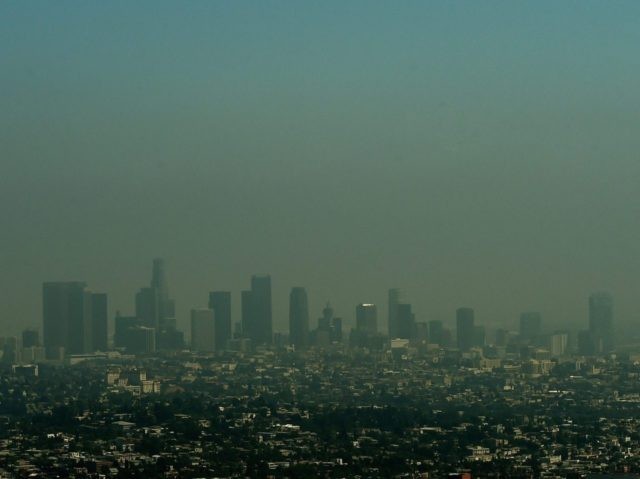The American Lung Association’s “State of the Air” report named 6 California cities among the top 10 worst for ground-level smog in the United States.
The Lung Association report card highlighted continued improvement in air quality during 2016. But about 166 million, or 52.1 percent, of Americans are still at risk from the health effects of air pollution, including higher levels of lung cancer, asthma attacks, cardiovascular damage, and developmental and reproductive harm.
The Lung Association has utilized data averages from the U.S. Environmental Protection Agency to calculate its “State of the Air.” This year’s 17th annual report used 2012, 2013 and 2014 ground-level ozone data from America’s 228 major cities in the United States to calculate the top ten “Most Ozone-Polluted Cities::
- Los Angeles-Long Beach, California;
- Bakersfield, California;
- Visalia-Porterville-Hanford, California;
- Fresno-Madera, California;
- Phoenix-Mesa-Scottsdale, Arizona;
- Sacramento-Roseville, California;
- Modesto-Merced, California;
- Denver-Aurora, Colorado;
- Las Vegas-Henderson, Nevada-Arizona; and
- Fort Collins, Colorado.
The good news from the “State of the Air” report is that most U.S. cities improved their ozone levels. Although Los Angeles dropped its average number of unhealthy days to its lowest level ever recorded, the mega-city still suffers the most ozone pollution in the nation.
Another five U.S. cities with historically high ozone levels experienced their lowest number of unhealthy ozone days on average since the report began in 2000, including: Visalia–Porterfield–Hanford, CA; Sacramento, CA; Dallas–Fort Worth, TX; El Centro, CA; and Houston, TX.
Four other California cities also experienced their lowest number of unhealthy ozone days, including: Bakersfield, CA; Fresno–Madera, CA; and Modesto–Merced, CA. San Diego had more high-ozone days on average in this report compared to the 2015 report.
Harold P. Wimmer, President and CEO of the American Lung Association commented:
Thanks to cleaner power plants and cleaner vehicles, we see a continued reduction of ozone and year-round particle pollution in the 2016 ‘State of the Air’ report. However, climate change has increased the challenges to protecting public health. … There are still nearly 20 million people in the United States that live with unhealthful levels of all three measures of air pollution the report tracks: ozone, short-term and year-round particle pollution.

COMMENTS
Please let us know if you're having issues with commenting.